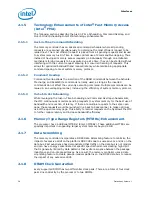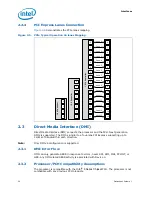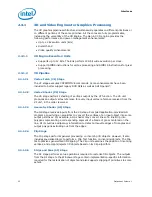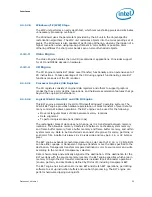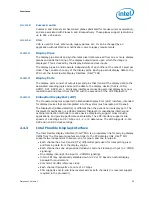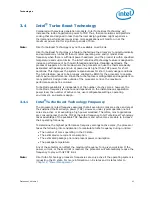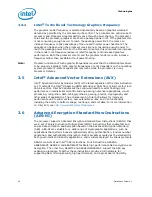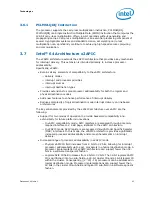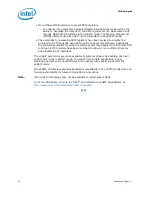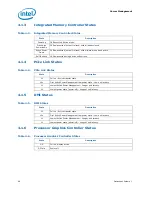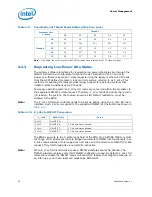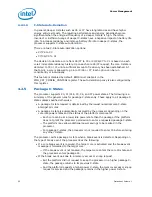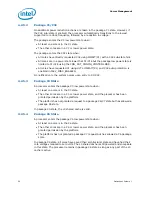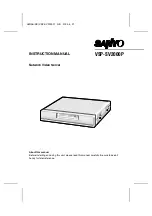
Technologies
40
Datasheet, Volume 1
3.2
Intel
®
Trusted Execution Technology (Intel
®
TXT)
Intel Trusted Execution Technology (Intel TXT) defines platform-level enhancements
that provide the building blocks for creating trusted platforms.
The Intel TXT platform helps to provide the authenticity of the controlling environment
such that those wishing to rely on the platform can make an appropriate trust decision.
The Intel TXT platform determines the identity of the controlling environment by
accurately measuring and verifying the controlling software.
Another aspect of the trust decision is the ability of the platform to resist attempts to
change the controlling environment. The Intel TXT platform will resist attempts by
software processes to change the controlling environment or bypass the bounds set by
the controlling environment.
Intel TXT is a set of extensions designed to provide a measured and controlled launch
of system software that will then establish a protected environment for itself and any
additional software that it may execute.
These extensions enhance two areas:
• The launching of the Measured Launched Environment (MLE)
• The protection of the MLE from potential corruption
The enhanced platform provides these launch and control interfaces using Safer Mode
Extensions (SMX).
The SMX interface includes the following functions:
• Measured/Verified launch of the MLE
• Mechanisms to ensure the above measurement is protected and stored in a secure
location
• Protection mechanisms that allow the MLE to control attempts to modify itself
For more information, refer to the
Intel
®
TXT Measured Launched Environment
Developer’s Guide
in
http://www.intel.com/technology/security
.
3.3
Intel
®
Hyper-Threading Technology
The processor supports Intel
®
Hyper-Threading Technology (Intel
®
HT Technology),
that allows an execution core to function as two logical processors. While some
execution resources (such as caches, execution units, and buses) are shared, each
logical processor has its own architectural state with its own set of general-purpose
registers and control registers. This feature must be enabled using the BIOS and
requires operating system support.
Intel recommends enabling Hyper-Threading Technology with Microsoft Windows 7*,
Microsoft Windows Vista*, Microsoft Windows* XP Professional/Windows* XP Home,
and disabling Hyper-Threading Technology using the BIOS for all previous versions of
Windows operating systems. For more information on Hyper-Threading Technology, see
http://www.intel.com/technology/platform-technology/hyper-threading/
.

